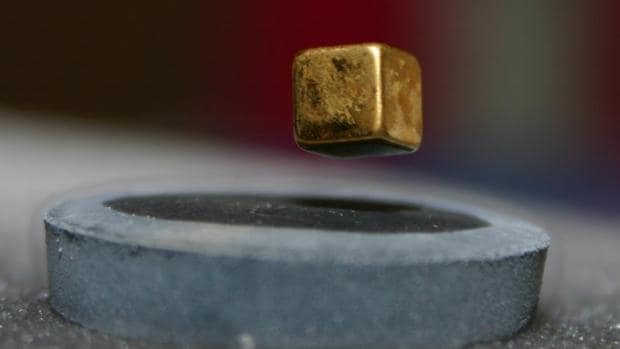 Superconductivity was discovered for the first time in 1911. It is a phenomenon characterized by two exotic properties that make it extremely interesting for various applications: on the one hand, it is characterized by conferring zero resistance, with which an electric current does not encounter opposition. and does not experience energy losses. On the other hand, it generates a magnetic field capable of levitating magnets on a superconducting material, through the so-called Meissner effect.
Superconductivity was discovered for the first time in 1911. It is a phenomenon characterized by two exotic properties that make it extremely interesting for various applications: on the one hand, it is characterized by conferring zero resistance, with which an electric current does not encounter opposition. and does not experience energy losses. On the other hand, it generates a magnetic field capable of levitating magnets on a superconducting material, through the so-called Meissner effect.
So it is not surprising that superconductors are a sought-after resource for maglev trains, power grids, MRI machines, cell towers or wind turbines. The problem is that to make a material superconducting it must be subjected to extraordinarily low temperatures, around -270ºC. That costs money and is difficult to achieve, especially if a practical application is pursued. However, a superconductor at room temperature could be revolutionary and allow, for example, the operation of faster electronic systems that do not overheat.
Now, for the first time, a group of researchers has managed to create a superconducting material at room temperature, 15ºC. Their research, published in the prestigious magazine "Nature", breaks a new record for superconductivity, until now located at -23ºC, and shows the potential of a new type of superconductors discovered in 2015 but not very well understood, as reported " Nature.com.
"Due to the low temperature limit, materials with these extraordinary properties have not yet transformed the world as many might have imagined," Ranga Dias, a researcher at the University of Rochester and co-author of the study, said in a statement. "However, our discovery will break those barriers and open the door to many potential applications."
However, there is still a slight drawback: The superconductor in question survives only under extremely high pressures, comparable to those at the center of the Earth, so it is to be expected that it will not have immediate practical applications.
A crystal at 2.6 million atmospheres
This time, the researchers placed a mixture of carbon, hydrogen and sulfur in a microscopic groove, drilled between two diamond points. Using a laser, they reacted the mixture and promoted the formation of a crystal, which, when the temperature decreased, from a certain point onwards, showed zero resistance to electric current. Next, they increased the pressure, and observed that said crystal acquired this property at higher temperatures. Its best result was obtained at a pressure of 2.6 million atmospheres. Finally, they also observed some evidence that the material generated a magnetic field.
The diamonds among which the superconducting crystal has been created
–
Michael Osadciw
These results are the continuation of research that began in 2015, when the same group reported the creation of a hydrogen and sulfur superconductor at a temperature of -70ºC, also at high pressures. In addition, they improve the results achieved in 2018, when a compound of lanthanum and hydrogen showed its superconductivity at only -13ºC.
However, this is the first time that superconductivity has been achieved with a compound of three chemical elements, and not two (carbon, sulfur and hydrogen). As Ashkan Salamat, co-author of the work and researcher at the University of Nevada (USA), told "Nature.com", this expands the combinations that can be included in future experiments in search of new superconductors.
An almost unknown material
At the moment, researchers have warned that many of the material's properties are unknown: "Not even the exact structure of the crystal and its chemical formula are known," said Mikhail Eremets, a researcher at the Max Planck Institute for Chemistry in Mainz. , Germany, not involved in work.
Furthermore, Salamat himself has commented that by increasing the pressures so that the material behaves as a superconductor, the sample decreases in size so much that it is difficult to measure several of its properties reliably.
Even so, many scientists are already intrigued by the high temperatures at which a material has been able to exhibit this property. "I'm sure that after the manuscript is published, many theoretical and experimental groups will get to work on this problem," said Eva Zurek, a computational chemist at the State University of New York at Buffalo, United States.
